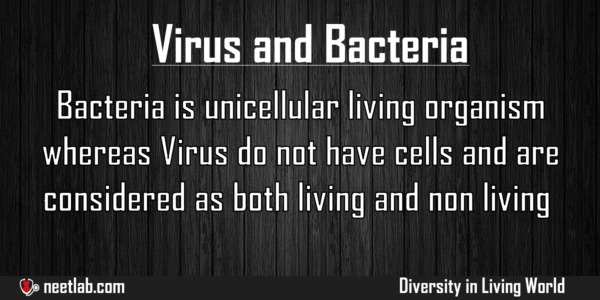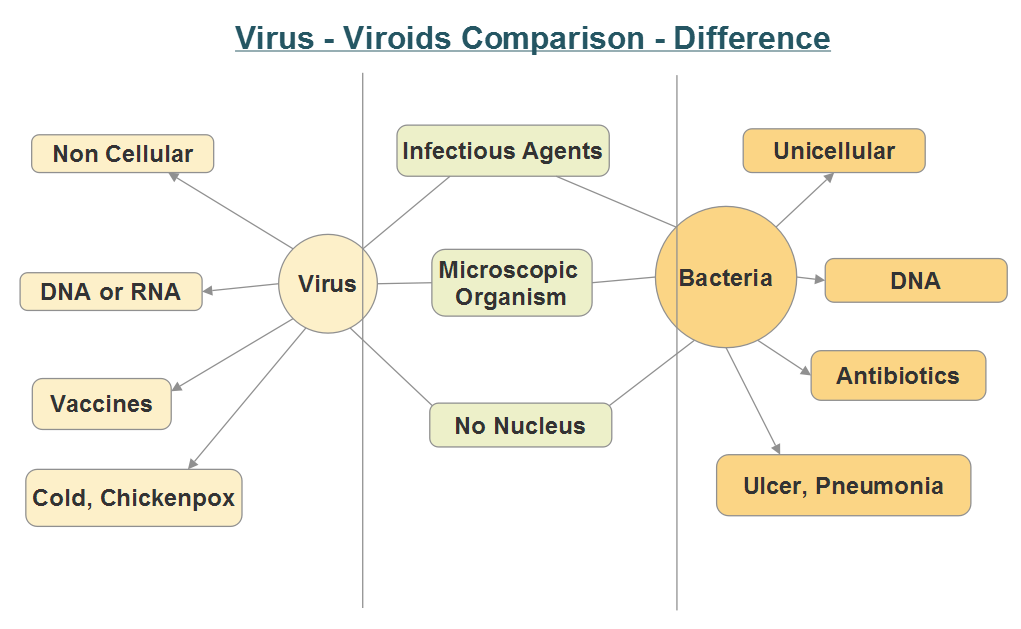| ⇦ | 
| ⇨ |
Bacteria is unicellular living organism whereas Virus do not have cells and are considered as both living and non living.
[lyte id=”s-HThHRV4uo” \]
Difference Table For Virus and Bacteria
| Characteristics | Virus | Bacteria |
| Benefits | Harmful | 90% are harmless and beneficial |
| Size | Smaller | Bigger |
| Ribosomes | Absent | Present |
| Genetic Material | Single or Double Stranded DNA or RNA | Double Stranded DNA |
| Reproduction | Need Host | By Binary Fission |
| Parasite | All | Some |
| Infection Area | Spread all over the body | Localized within organ |
| Cure | Cannot be treated with antibiotics. Possible to Prevent using Vaccines | Treated with Antibiotics |
| Examples | HIV, Rhinovirus | Escherichia coli, Vibrio cholerae |
| Diseases | AIDS, Common Cold, Chickenpox, Ebola | Ulcer, Food Poisoning, Pneumonia, Tuberclosis |
Common Properties of Bacteria and Virus
- Both are infectious agents.
- Common Symptoms of infection are fever, fatigue.
- Not visible to our eyes
- They both do not have nucleus
Related Questions
- The virus, that infects bacteria, are made up of
- Which of the following is bacterial disease?
- Which of the following virus causes common cold?
Subject: Biology (4253)
Important MCQs Based on Medical Entrance Examinations To Improve Your NEET Score
18000+ students are using NEETLab to improve their score. What about you?
Solve Previous Year MCQs, Mock Tests, Topicwise Practice Tests, Identify Weak Topics, Formula Flash cards and much more is available in NEETLab Android App to improve your NEET score.
Share this page with your friends


Leave a Reply